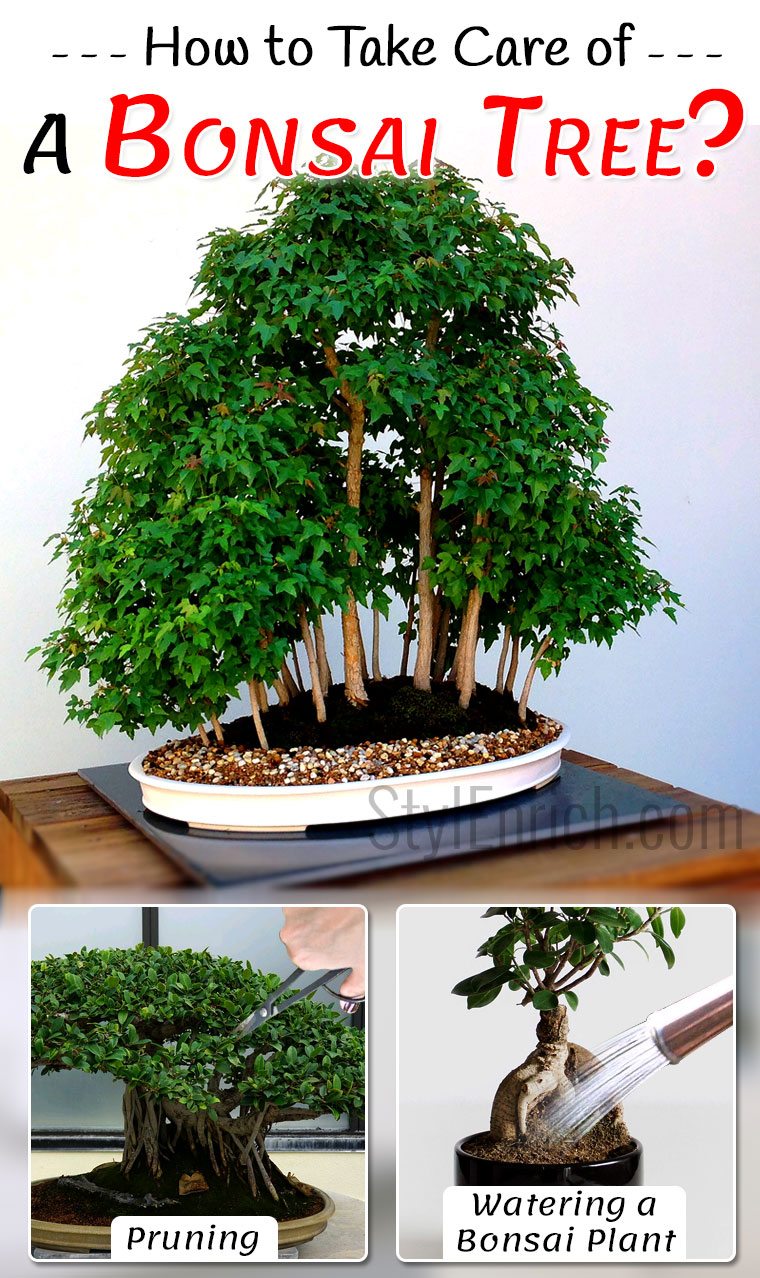‘Bonsai’ as we all know is the ancient Japanese art of planting trees in the containers so as form a miniature landscape. Making a bonsai involves a lot of imagination, efforts and a long-term cultivation of the plants until they take the desired shape in the container. The major steps involve in the Bonsai formation include the selection of the source material and the techniques that you wish to choose for creating it. These techniques majorly vary from leaf trimming, pruning, wiring, clamping, grafting, and defoliation. We will see here a complete guide on how to take care of a bonsai tree.
When it comes to caring for a bonsai plant, there are certain instructions that need to be considered strictly. In this write-up, you’ll get to know all about how to take care of a bonsai tree and the steps involved in this process.
Let’s see how to grow aloe vera plant at your home?
How to Take Care of a Bonsai Tree With Necessary Steps?
1. Watering The Bonsai Plant
The initial step to know while you are learning how to take care of a bonsai tree involves watering it correctly.It is necessary to water the bonsai plant only when it feels slightly dry. Dig the soil for about a centimeter with a finger and check for dryness. Do not water them routinely if you feel the soil seems to be wet. The timing at which you water also matters and it is recommended not to use cold water during the afternoon hours. Moreover, you should use rain water as it is highly productive but in case you don’t have access to it, you can use the normal tap water. Also, remember to soak the roots completely with water completely.
We will know here Amazing Benefits of Sweet Potatoes…
2. Fertilizing The Bonsai Plant
The next important step to consider while taking care of the bonsai plant is the proper fertilization. Since bonsai are grown in a small container with a fixed amount of soil, it is essential to maintain the nutritional content in the soil and make it as fertile as possible for the healthy growth. A fertilizer with a proportionate amount of Nitrogen (N), Phosphorus (P), and Potassium (K) is considered to be the best option for plant treatment. Each of these elements has a different role to play where nitrogen takes care of the growth of the stems and leaves, phosphorus ensures a healthy root growth and potassium makes sure that the plant remains healthy.
You need to be aware of the season in which you are fertilizing the plant. From early spring to mid autumn, you can fertilize the plant on a routine basis whereas, for the plants which are kept indoors, you can fertilize them throughout the year. Furthermore, here is the list of the NPK proportions according to the season:
- For summers: Make use of a fertilizer with an NPK ratio of 10:10:10
- For winters: Use a fertilizer with NPK content in the ratio 3:10:10
- For encouraging flower, growth use a fertilizer in the ratio 6:10:6
3. Pruning
Pruning is basically done in two ways: Maintenance pruning – which involves maintaining and refining the shape of the bonsai, and Structural pruning which is a rigorous process to give the tree a desired shape and style. This technique is essential as it compresses ‘Apical dominance’ which is responsible for the growth of trees. Pruning involves forcing the top and outer portions of the plant to redistribute growth in the inner and lower parts.
It is recommended to prune the bonsai plant during March to September; otherwise, you can even do it during the entire growth season if you feel the need.
Pruning varies according to the different species of plants. In the case of deciduous and pine trees, pinching the dead foliage which develops at the cutting edge is required to let it from stop growing. Pull out the foliage eventually with gentle hands and use scissors for the significant cuttings. Defoliation is another aspect of pruning and involves removing the leaves from the deciduous trees during the summers in order to let the new leaves take their place.
If you are considering to applying structural pruning, then the preferred season, in this case, is early spring and autumn. The first step of this technique involves removing the dead wood pieces and the stems which do not match the desired design. Moreover, you need to remove vertically straight branches which do not bend; stems which are unnaturally twisted and turned, and thick branches which are present at the top of the tree.
Don’t miss to Know About Amazing Wheatgrass Benefits…
4. Wiring
Wiring is a crucial technique in taking care of a bonsai tree as you can bend the branches of the plant and give it the desired shape. This method usually takes a few months if you wish to the desired results. Winters are the best time to implement this technique as leaves usually shed during this season. The wires which are used in this are made up of anodized copper or anodized aluminum which are respectively used for deciduous and conifer or pine trees.
5. Nebari
Nebari is an important step in taking care of a bonsai plant which either involves regularly pruning the downward growing roots or applying the propagation technique. The former method involves removing vertically growing roots every time you repot the plant as each single time you’ll prevent sideward-growing of the stem which will ultimately lead to the formation of a Bonsai Nebari.
Another method is called the ‘Tourniquet’ which involves tightly wrapping the copper wire around the base of the bonsai tree truck. It is recommended to incorporate this method during the spring months. This technique blocks the flow of nutrients to the roots which will push up new roots to grow above the wire.
Click here to read the saffron uses and benefits and how to make the right selection of this spice…
6. Creating a Deadwood
If you wish to enhance the character of your bonsai plant, then there is no better method than creating a deadwood in the form of Jin or Shari. This technique is generally applied to the evergreen trees as it might look unrealistic on the deciduous trees. Early spring or late summers are the best times to go ahead with this technique.
This method requires immense practice and the right tools such as the Jin plier, lime sulphur and graving tools.
For creating a Jin on bonsai, you need to remove the bark from the branch and just leave behind the hardwood. Use Jin pliers to pull out the hardwood remains and when the shape is ready to use a concave cutter or sandpaper to round off the edges. You can then bleach it with the lime sulphur and leave it for a night to dry it off.
In the case of creating a Shari on bonsai, cut the bark with a sharp knife and tear it down with the help of Jin pliers after you have drawn out the shape of the Shari with a chalk on the trunk. When you are ready with the shape, you can then use a concave cutter it graving tools for making a hollow in the trunk. At last, bleach the Shari with lime sulphur to protect it from infections and termite attack.
Learning how to take care of a bonsai tree involves a lot of patience and the right knowledge of its measures. Conducting a step-by-step process of grooming the bonsai can give you the desired results; you only just need to be right with the technique.
Hope this write up might have successfully introduced you to the different steps which are involved in how to take care of a bonsai tree. So, start with the grooming session now!


















